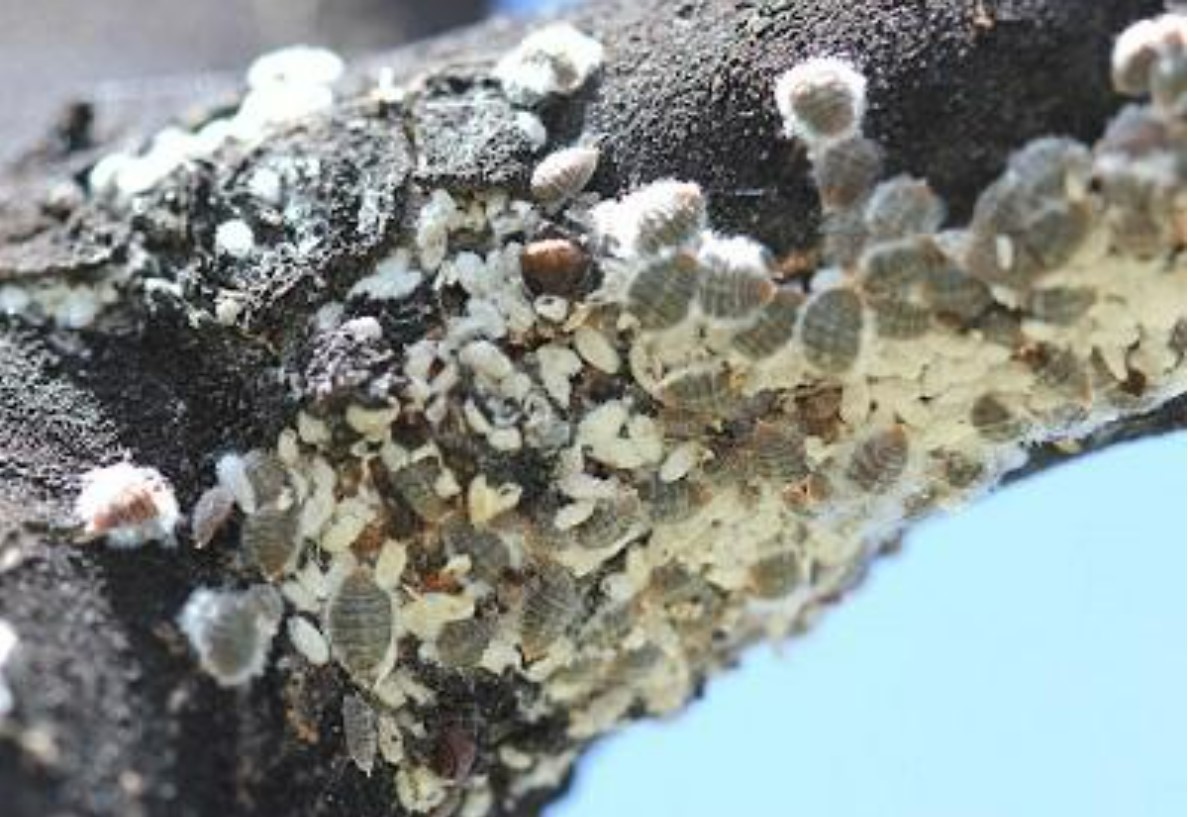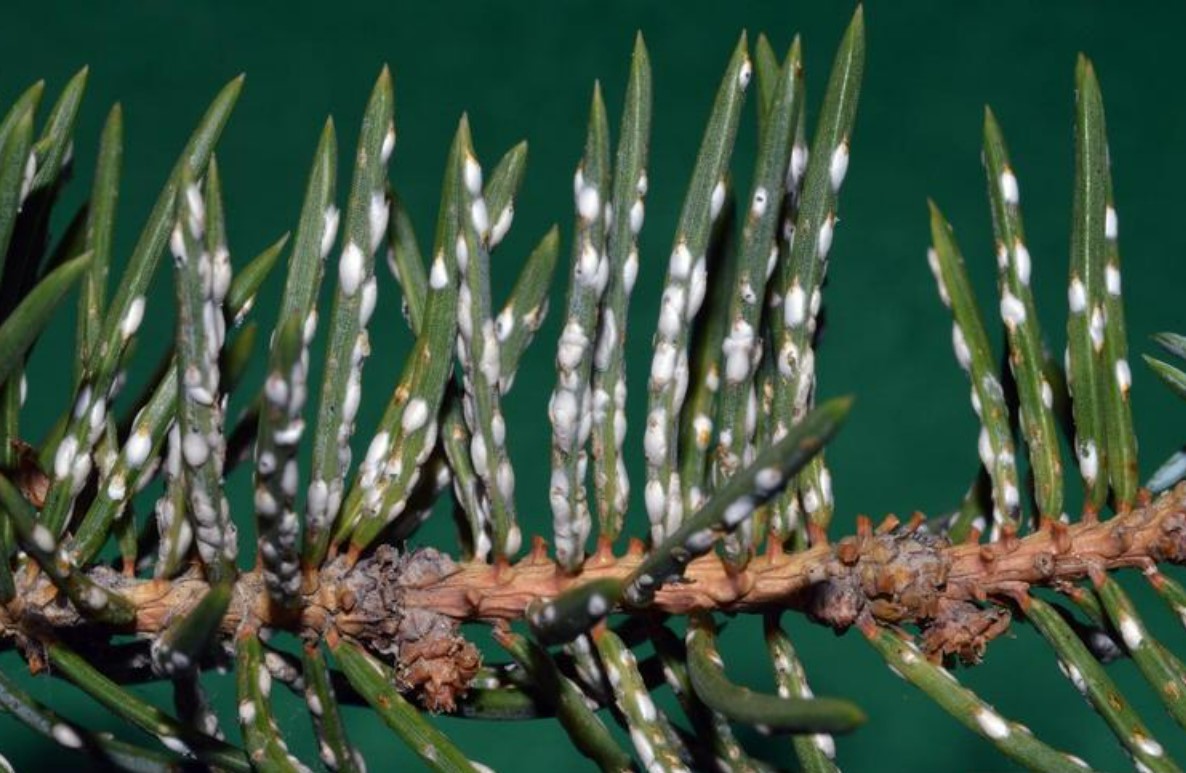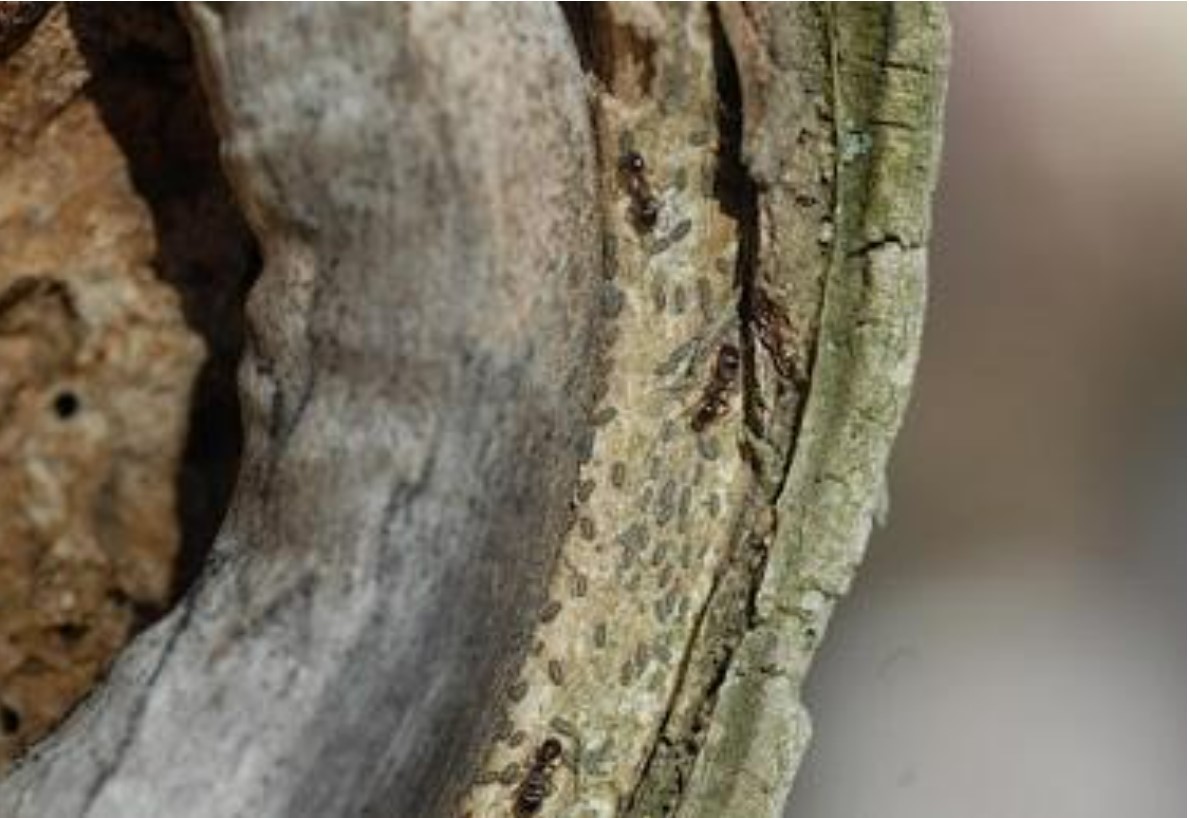Scale insects are actually relatives of aphids, and damage plants by sucking sap from twigs, branches and leaves. The insect protects itself within a hard outer shell. The mobile stages of the scale lifecycle are referred to as crawlers; they emerge from the shell of the female after hatching and disperse throughout the host before settling and forming their shells. It is during this mobile stage that control measures are most effective. The crawling stage can only be detected by close observance, tapping the branches over a piece of paper or examining them with a hand lense works best. It takes two months formost scales to complete their lifecycle. The scales are briefly vulnerable to control measures during the adult molt that takes place in late summer. Egg laying then occurs underneath the protective shell of the female.
Luckily, scale insects seldom do severe damage to deciduous trees, only occasionally weakening or causing dieback of stems or branches. Scale on conifers, however, can do considerable damage if an infestation persists over a long period of time. This weakens the tree and makes it susceptible to other pests and disease.
Types of Scale Insects
Pine Needle Scale (Chionaspis pinifoliate)
Hosts: Needles of white and Colorado spruce and Scots pine. One generation per year. The scales are white, hard, elongate to pear shaped, about 3mm long, located on needles. Overwinter as eggs beneath the scale. When they emerge in the spring (usually mid-June) they disperse to other needles and trees. They remain stationary until August, when they molt to adult form in August. After mating, the female secretes the hard shell to protect the eggs as they are laid. Warm, dry conditions favour development and damage.
European Fruit Lecanium(Lecanium corni)
Hosts: Small branches and twigs of flowering plum, elm, variegated dogwood, false, spirea, white birch, ash, some apple varieties and others. Scales are pale to dark brown, spherical, leathery, high-profiled lumps. Female mature in early summer, make and produce eggs. Crawlers emerge from mid-June until late July. They settle onto the leaves and secrete a shell over themselves. In the fall, they crawl off the leaves and overwinter on the twigs.
Oystershell Scale (Lepidosaphes ulmi):
Hosts: Stems and branches of many deciduous shrubs and trees, especially lilac and cotoneaster. Scale resembles a tiny oystershell, grey or dark brown and hard shelled. On occasion they become so numerous that the stems are encrusted. Overwinter as eggs under the shell of the female. Eggs hatch in spring; they disperse, attach and are full grown by mid-July, when egg laying begins.
Scurfy Scale (Chinaspis furfura):
Hosts: Leaves, branches and trunks of a variety of trees including elm, willow, ash, maple and apple. Scale is small, about 2mm long, dirty white and pear-shaped. Overwinters as eggs under the shell of the female. Crawlers are active in mid June.
San Jose scale (Quadraspidiotus perniciosus)
Hosts: Leaves and branches of a wide variety of hosts, sometimes severe on ornamentals. Scale is grey, circular, 1-2mm in diameter, flat with a raised area near the middle. Overwinters as a partially grown nymph. May have two generations.
European Elm Scale (Gossyparia spuria)
Also known as an unwelcome Old World immigrant, has been doing a number on Winnipegs Elm and Ash trees for a number of years. Infested elms show branches blackened by the sooty mold that accompanies the sticky residue of this sap-sucking pest. Leaf discoloration, early leaf drop and twig and branch death follow on severely stressed trees. Unlike most insect pests, European elm scale can kill trees. A close look at a scale-infested tree reveals small dark-coloured limpet-like bumps with a white fuzzy fringe
Sign and Symptoms
Symptoms of a scale infestation include include yellowing and wilting of foliage and needles, as well as the obvious presence of the scales themselves. Soft scales excrete a sticky substance called honeydew, this will coat leaves and needles around the infestation and may result in the growth of sooty mold.
Prevention
Watering & Fertilizing
- Tree health is very important – make sure trees are watered and fertilized adequately.
Minor Pruning
- If the infestation is caught early enough, the affected parts can be pruned off and destroyed before the scales spread.
Control - What you need an arborist to do
Pesticide
- Dormant oil sprays may be used on deciduous trees, follow the label directions carefully.
- Timing is very important, application during the crawling stage provides the best control.
- In most cases, this is about mid-June, but careful surveillance of the affected plants will reveal the correct time.
- A second application is advisable when the adult molt occurs in early August.
- Chemical control is usually only necessary for severe infestations on conifers.



Tree Health Issues
Wondering about costs?

